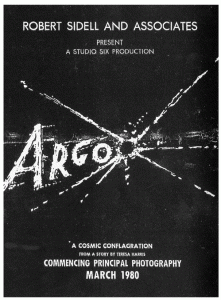 With Argo about $21m into its run, a fair amount of you have likely seen this great, great movie, but do you know the full story yet? Much brouhaha has been made of how much the script and Affleck’s filmmaking ratchets up the tension in the final act despite the relatively straightforward manner in which the operation actually played out, but frankly I think that’s a whole lot of people faulting a movie for being a movie.
With Argo about $21m into its run, a fair amount of you have likely seen this great, great movie, but do you know the full story yet? Much brouhaha has been made of how much the script and Affleck’s filmmaking ratchets up the tension in the final act despite the relatively straightforward manner in which the operation actually played out, but frankly I think that’s a whole lot of people faulting a movie for being a movie.
Still, there are a lot of interesting details that didn’t make it into the movie, and a lot of intersting details in the movie you might be surprised to find came from real life! Even in a story about the CIA posing six American hostages as scifi filmmakers to get them out of Iran, there were all kinds of other crazy minutia that made the whole thing even more absurd. Fortunately, the entire story is available in the words of Antonio J. Mendez himself from none other than the CIA itself! Right here you can find the full +10,000 word study written by the exfiltration specialist who conceived of and oversaw the operation, and has now been immortalized by Ben Affleck and his mighty 80s beard.
Much of it –including that three cover stories were presented to the hostages and they were given a choice– is really just interesting trivia, while some of it illuminates the bigger differences between fact and film. For example, the film doesn’t acknowledge that the hostages actually stayed in two separate homes, though it’s completely true that there was a ticking clock on them being discovered. Rather than children reassembling photos however, it came in the form of world press realizing there were escaped hostages, and “cryptic phonecalls” coming through at the Ambassador’s home asking for one of the hostages by name (I’m shocked that bit didn’t make it into the film in some form).
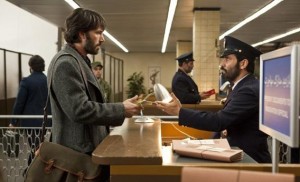 In any event, if you don’t have time to read through nearly 11,000 words of CIA history, or are just pulling your TL:DR face, I’ve assembled a Chewer’s Notes of sorts below that you can skim through that hits the major points of the narrative, and offers a few interesting comparisons and contrasts with the film.
In any event, if you don’t have time to read through nearly 11,000 words of CIA history, or are just pulling your TL:DR face, I’ve assembled a Chewer’s Notes of sorts below that you can skim through that hits the major points of the narrative, and offers a few interesting comparisons and contrasts with the film.
While the film credits it to a conversation with Mendez’s son, the man himself describes his first conception of the Argo idea pretty plainly as having “occurred to [him] the night before at home in Maryland while [he] was packing.” That’s merely the first in many nonplussed, anti-cinematic descriptions later massaged into worthy narrative chunks by screenwriter Chris Terrio.
While always Mendez’s first choice for a cover story, the “Hollywood Option” was also always a part of a trio of cover stories, each developed and brought along to Iran as a possibility. The Argo plan was definitely the most well filled out though, which all began with a call to the man John Goodman portrays in the film, referred to as “Jerome Callaway” in the brief (his real name was John Chambers).
Jerome replied that this would require about eight people, including a production manager, a cameraman, an art director, a transportation manager, a script consultant, an associate producer, a business manager, and a director. Their purpose would be to look at a shooting site from artistic, logistic, and financial points of view.
Because movie-making is widely known as an unusual business, most people would not be surprised that a Hollywood production company would travel around the world looking for the right street or hillside to shoot a particular scene.
Apparently the CIA even considered using the exfiltration operation as a means to plant seeds for a pararmilitary operation that would come later, with the location scout paving the way for an actual camera crew to enter the country, allowing the US to smuggle weapons and equipment in among various filmmaking apparatus (obviously that operation never manifested).
A relative “moderate”–Abulhassan Bani-Sadr–was about to be elected President of Iran, and we judged it possible that he could be sold on these economic points and then might be able to gain agreement from the radical factions of the regime. If so, the cover for infiltrating the Delta Force (in preparation for a hostage rescue attempt at the Embassy) as a team of movie set construction workers and camera crews to prepare the set was a natural. We imagined that it might be possible to conceal weapons and other material in the motion picture equipment.
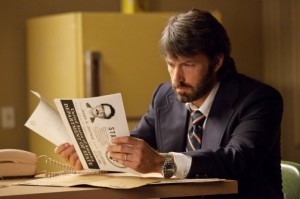
What’s great is reading that some of the team’s legitimate attempts to keep secrets in Hollywood only resulted in more legitimate coverage from the trades.
Our efforts to keep Jerome’s involvement secret actually added credibility to our putative film-making company. Hollywood, moreover, was an ideal place to create and dismantle a major cover entity overnight. The Mafia and many shady foreign investors were notorious for backing productions in Hollywood, where fortunes are frequently made and lost. It is also an ideal place to launder money.
My favorite bit in the entire piece? The revelation that “Argo fuck yourself!” was not only a real “battlecry,” but the origin of their decision to call their scifi script Argo in the first place!
Jerome and I then set about picking a name for our movie. We needed something catchy from Eastern culture or mythology. After several tries, we hit on it! During our 10-year association, he had proven to be a great story and joke teller. He once told a group of us a profane “knock-knock” joke, with the word “Argo” in the punch line.
This word became an in-house disguise-team recognition signal and battle cry. We used it to break the tension that often built up when we were working long hours under difficult circumstances preparing for an important operation. Jerome remembered this. He also recalled that the name stemmed from mythology. He looked up the definition of Argo and confirmed it as the name of the ship on which Jason and the Argonauts sailed to rescue the Golden Fleece from the many-headed dragon holding it captive in the sacred garden. Perfect! This precisely described the situation in Iran.
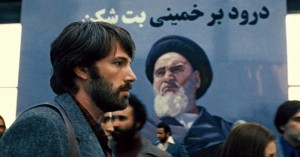 By the way, if you had any questions about Tony’s single-scene meeting with that one shady character in the film before entering Tehran, this will clear it up a bit…
By the way, if you had any questions about Tony’s single-scene meeting with that one shady character in the film before entering Tehran, this will clear it up a bit…
Julio and I had an especially worthwhile chance meeting just before I left for the airport that evening. We had an opportunity to meet with another Agency officer who had been traveling in and out of Tehran in support of the hostage rescue operation. He would ultimately be responsible for creating the inside support mechanism. He had been in the “business” since serving with OSS and parachuting into Europe during World War II. He clearly was a master of the game, and gave us some useful insights about the situation at Mehrabad and in Tehran. This strengthened our confidence and gave us a better idea about how to behave.
Tony’s also great with noting production design and costuming details, like a true Tech Ops specialist…
Ambassador Taylor, who had been expecting us to arrive sometime that morning, was waiting upstairs in his outer office. We did not immediately recognize him as the Ambassador. He was a tall, lean, rather young, pleasant individual dressed in Western jeans and a plaid shirt and wearing cowboy boots. He wore “mod” glasses and had a full salt-and-pepper Afro-style haircut. This improbable-looking diplomat greeted us warmly.
Towards the end of Tony’s story, some of the discrepencies between the film and the facts begin to emerge- namely that there was never any need to meet an Iranian official in the bazarr, there was no inter-hostage friction about taking on the “Hollywood Option”cover story, ticket approval was never an issue, and many of the last minute crisis were fabricated in lieu of the rather straighforward reality of the exfiltration. In fact, by choosing a 7:30am flight and arriving at the airport at 5:00am, they bypassed much of the more intense security altogether!
The others began presenting their documents and the yellow embarkation forms. I waited for each to clear in case one got into trouble. I would get involved quickly as the production manager responsible for the well-being of his pre-production crew. I was armed with the Argo portfolio and would overwhelm anyone standing in the way with Hollywood talk. The Iranian official at the checkpoint could not have cared less. He stamped each of us out and collected the yellow forms.
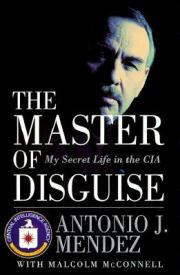
That said, there was an actual delay on the flight that made for an intense hour of additional waiting- but that’s not exactly cinematic conflict.
The story even ends with this wonderful bit of trivia…
An ironic coda: by the time Studio Six folded several weeks after the rescue, we had received 26 scripts, including some potential moneymakers. One was from Steven Spielberg.
So no doubt Affleck and company ramped up the requisite action in the story by an order of magnitude or two, but it’s all in service of a great film that has put the spotlight on a particularly quirky episode in intelligence history. I love Argo, silly tarmac chase and all, and if you haven’t already caught it, make sure you make it happen for yourself soon. Even knowing every real detail doesn’t prevent the film from grabbing you with its hook and dragging you to the edge of your seat. Seriously, I’m well aware how trite that phrase is – but this film earns it.
If you ever find the time, Tony Mendez’s full report is a great read, and well worth your time.